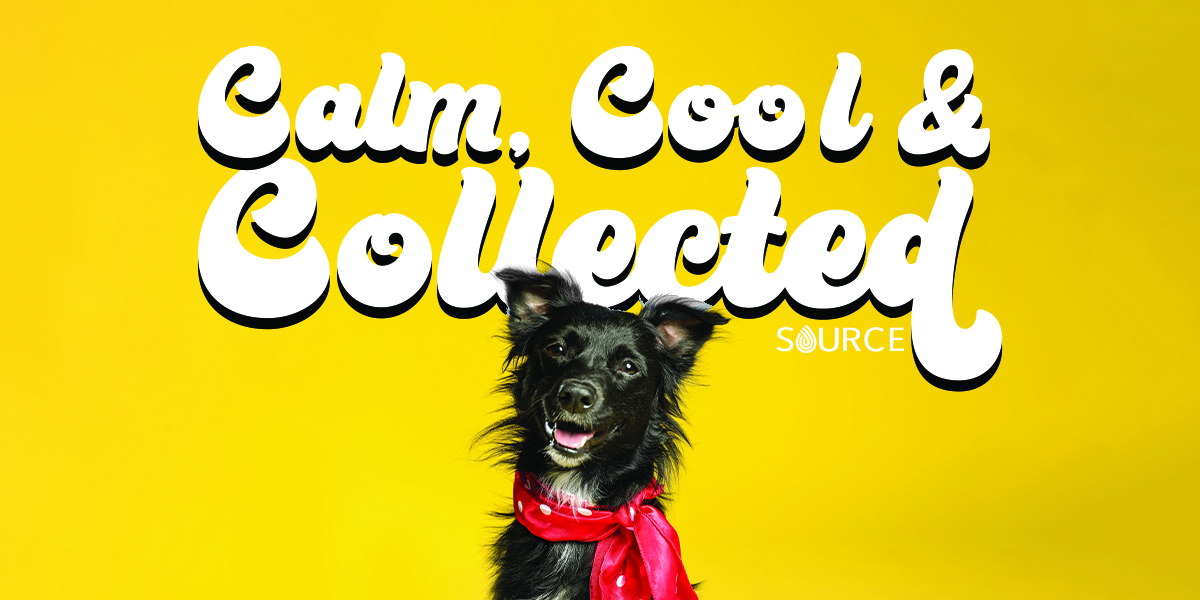CBD Oil for Pets
How to Calm Dog Anxiety Naturally: 6 Solutions
This week is Dog Anxiety Awareness week. And since so many dogs (as many as 70%) suffer from some type of anxiety, this is an important week for all pet parents!
If your dog displays signs of anxiety, whether behavioral (ongoing anxiety about something, like separation anxiety) or situational (afraid of something specific, like fireworks or thunderstorms), there are various ways you can help keep them cool, calm, and collected.
So, how can you tell is anxiety is an issue for your dog, and what can you do about it?
Signs of Dog Anxiety
It’s often fairly easy to tell when your dog is anxious. Or maybe you already know the triggers well (fireworks or thunderstorms or strangers in the house).
These are some of the most common signs of dog anxiety:
- Hiding
- Trembling or chaking
- Chewing or destructive behavior
- Barking or crying
- Restlessness, pacing
- Excessive licking
- Aggression
- Loss of appetite, refusal to eat
- Excessive panting
Pharmaceuticals for Dog Anxiety?
For many people, signs of anxiety in their pet usually leads to a trip to the vet. And that’s ok, but if you go to a conventional vet, they’ll probably suggest anti-anxiety meds like Valium, Xanax, ProZac, Paxil or Lorazepam. Yes, those are the same anti-anxiety drugs many people take.
How do these meds work? In our pets’ brains (and our own), chemicals called neurotransmitters send messages between nerve cells. Certain neurotransmitters, such as norepinephrine, serotonin, dopamine, and gamma-aminobutyric acid, are associated with mood. Anti-anxiety meds increase the levels of these different chemicals in the brain, helping your pup feel more calm.
The thing is, these drugs can take a while to kick in – often several weeks before you’ll notice a change in your pup’s anxiety levels. And these are often long-term treatment methods.
What’s worse, there are side effects associated with taking them, the most common of which are:
- sleepiness
- decreased appetite
- vomiting and diarrhea
- shaking
- restlessness
- loss of coordination
- weight loss
Serious/severe side effects include seizures, aggression, and excessive/persistent vomiting.
Yes, in some severe cases, medication may be the answer, but often natural remedies will do the job without the nasty side effects.
They one (or all) of natural solutions to find the fit that’s right for your dog.
6 Ways to Calm Dog Anxiety Naturally
These are some of the best remedies for natural relief of anxiety. Try combining them to find out what works best for you pet.
1. Exercise
Exercise provides great relief not just for humans, but for our companion animals as well. Often anxiety comes as a result of an overactive or bored mind, so a tired dog is less prone to anxiety.
There are a couple different ways that exercise can help. First, it stimulates the natural production of serotonin in the brain. That’s the happy hormone, and it acts as a mood stabilizer. It also helps with sleep, appetite, and digestion. Second, it helps get rid of all that excess energy that builds up, along with the tension that can increase anxiety. Go for a long walk or hike with your dog before a normally stressful situation. Toss a frisbee around in the backyard. Anything that wears them out can help reduce feelings of anxiousness when the time comes.
2. Anti-anxiety Clothing
Have you ever heard of the Thundershirt? The idea behind anti-anxiety clothing is that it applies gentle pressure to a pup’s chest, essentially swaddling your dog and giving him a sense of security.
If your dog permits it, sometimes a blanket will do the trick just as well. Covering them or wrapping them up in their bed mimics this pressure, providing that security they need in times of increased anxiousness.
3. CBD Oil
We know that research suggests incredible potential for anxiety in humans, but what about giving it to our dogs? Well, CBD oil works the same way in our pets – by interacting with your dog’s endocannabinoid system. This system sends signals throughout the body when something is amiss. And that includes anxiety. CBD works by increasing the body’s ability to product serotonin, that happy hormone we mentioned earlier.
One of the best things about CBD for dog anxiety is that it tends to work quite quickly, making it a go-to for situational anxiety. Know Fourth of July fireworks are on the agenda, or see storm clouds brewing overhead? Grab your bottle of CBD.
4. Mental Stimulation
Just like exercise to tire your dog physically, mental stimulation has the same effect on dog anxiety. Plus, there are plenty of reasons to give your dog’s brain a good workout, beyond anxiety, including stress reduction, relieving boredom, and strengthening the bond the two of you share.
Here are some ideas to get that that brain working:
- Play a game of hide and seek, either with yourself as the hidden object or you pet’s favorite toy
- Teach your pup a new trick, or work on reviewing old ones
- Set up an agility course in the backyard or basement
5. Calming Pheromones
Dog pheromones are chemical signals that dogs give off that are picked up by other dogs. Humans can’t see or smell dog pheromones, but dogs sure notice them. We give off pheromones too, but you want dog specific ones in this case.
Research tells us that dog-appeasing pheromones can be very useful, especially for things like separation anxiety.
6. Massage
Think about how calm you get during a nice massage, or when someone brushes your hair. Oh man, my eyes close just thinking about it. Well, the same effects can often be seen with anxious pups.
Two good techniques to try:
- Backstroke: Start at the back of your pup’s head, then, with very gentle pressure, stroke up and down either side of your dog’s spine, staying off the bone.
- Head massage. Using gentle pressure, start at the top of your dog’s nose and run your thumb from the top of the nose and over the head, going back and forth slowly.
Keeping an anxious dog calm can be like trying to solve a complex puzzle. Every dog is different, both in what gives them anxiety and how you help them manage it. Give these tools a try and work with your dog to ease their stress and help keep them cool, calm, and collected.

